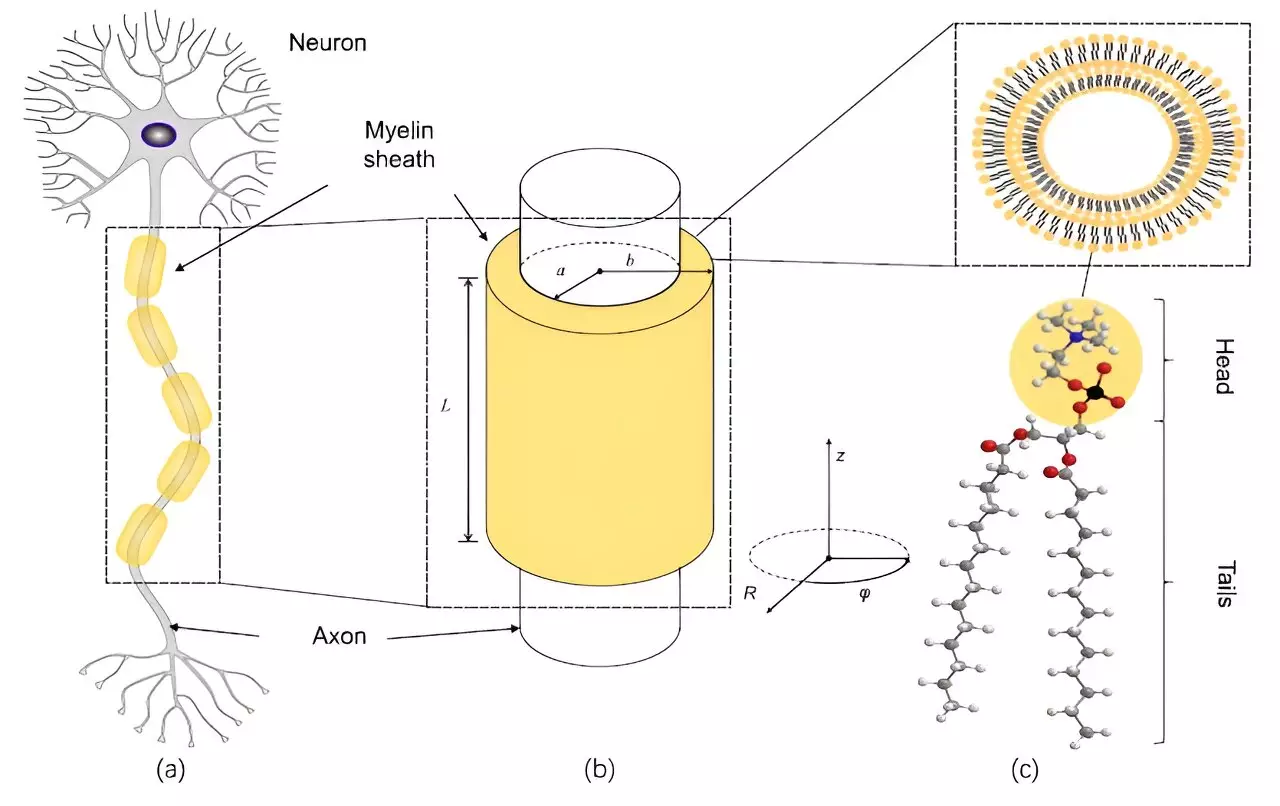The intricate workings of human consciousness remain one of the most elusive topics in the realm of scientific inquiry. Despite advancements in neuroscience, the exact mechanisms behind how we perceive the world, think, and feel remain shrouded in mystery. Interestingly, a growing body of research suggests that quantum mechanics, particularly the phenomenon of quantum entanglement, may shed light on this complicated subject. A recent study conducted by a team of Chinese researchers proposes an innovative hypothesis: could entangled photons within the myelin sheath of nerve fibers play a critical role in the rapid communication between neurons? This article delves into this revolutionary premise and its implications for our understanding of consciousness.
Traditionally, scientists have viewed neural communication as occurring through electrical signals transmitted via synapses between neurons. These specialized connections, known as axons, are analogous to electrical wires that transmit information throughout the nervous system. However, the foundational question remains: how do millions of neurons synchronize their activities to produce conscious thought? The mechanisms that enable this intricate coordination appear to slow down at speeds often below the speed of sound, rendering such synchronization seemingly impossible.
To explore this conundrum, researchers have turned their attention toward the role of myelin—an insulating layer composed of lipids that wraps around axons. This sheath not only protects and shapes the axons but might also facilitate synchronized neuronal firing in ways previously unrecognized. Understanding myelin’s complex role could provide insights into how neurons communicate more rapidly than conventional electrical signals alone would allow.
In their groundbreaking study, researchers led by Professor Yong-Cong Chen from Shanghai University ventured to investigate why neural synchronization can occur so seamlessly in the brain despite the apparent limitations of conventional transmission mechanisms. They speculated that entangled photons—light particles that exhibit quantum characteristics—could emerge within the structure of myelin. These photons arise from the interactions of infrared light and the vibrations of carbon-hydrogen bonds in lipid molecules as they oscillate during metabolic cycles.
Applying principles of cavity quantum electrohydrodynamics, the team constructed a theoretical framework involving a cylindrical cavity formed by the myelin sheath, which serves as a conductor. This unique environment allows the isolation and study of quantum phenomena, enabling researchers to quantify the electromagnetic fields and photons characterized by quantum behavior. By manipulating this system, the researchers could explore the entangled states of photons within the cavity.
A key outcome of this research is the affirmation that entangled photons can be produced at an accelerated rate within this unique myelin structure. Unlike classical physics, where the interactions of separate entities do not affect each other instantaneously, quantum entanglement enables measurement or interaction with one photon to exert an immediate influence on its entangled counterpart, regardless of distance. This characteristic could open new avenues for understanding how rapid signaling and synchronization could effectively occur across extensive neural networks.
The implications of this phenomenon extend far beyond mere communication between neurons. Entanglement may redefine how we understand neural processing and potentially lead to new insights into the intrinsic workings of consciousness. For instance, the study suggests that quantum effects might influence flow through potassium ion channels in neurons, adding another dimension to neuronal communication and interaction.
While this groundbreaking research offers tantalizing prospects, it also highlights the pressing need for further exploration regarding the connection between quantum mechanics and neurobiology. As the authors of the study emphasize, their findings are exploratory in nature; they do not claim to establish direct correlations between consciousness and quantum entanglement. Yet, this line of inquiry prompts researchers to examine potential mechanisms underlying neural synchronization, which could be pivotal for understanding numerous neurobiological processes.
As we investigate the mysteries of consciousness, considerations of quantum realism must be integrated into the considerations of neuroscience. The possibility that entangled photons within myelin sheaths could facilitate rapid communication among neurons presents a captivating paradigm shift in our understanding of brain function. Continued research in this intersection could lead to not only transformative insights into neural dynamics but also spark a deeper comprehension of the very essence of consciousness itself. As we venture further into this uncharted territory, the profound relationship between quantum mechanics and the human experience beckons for deeper investigation and understanding.


Leave a Reply